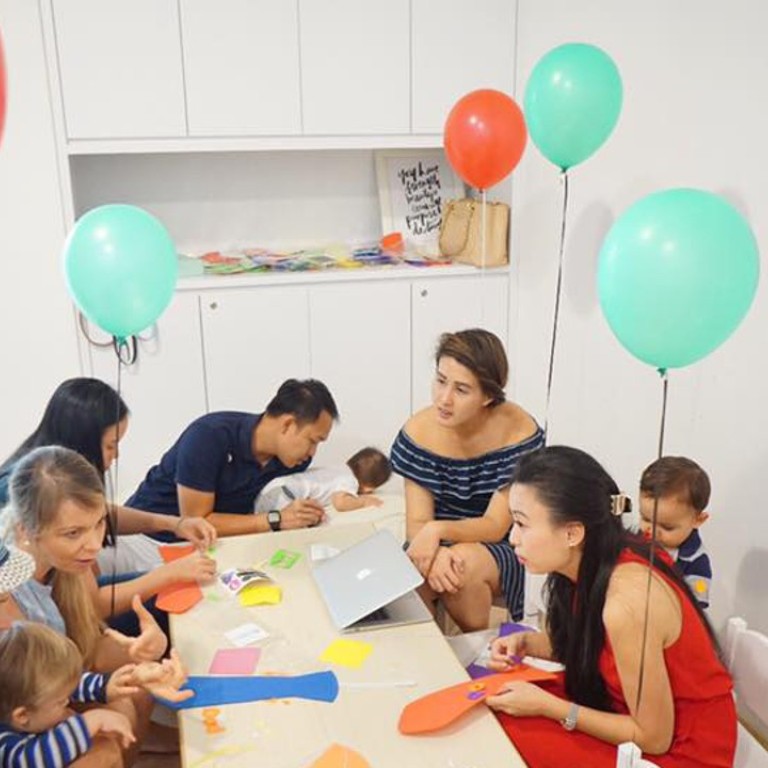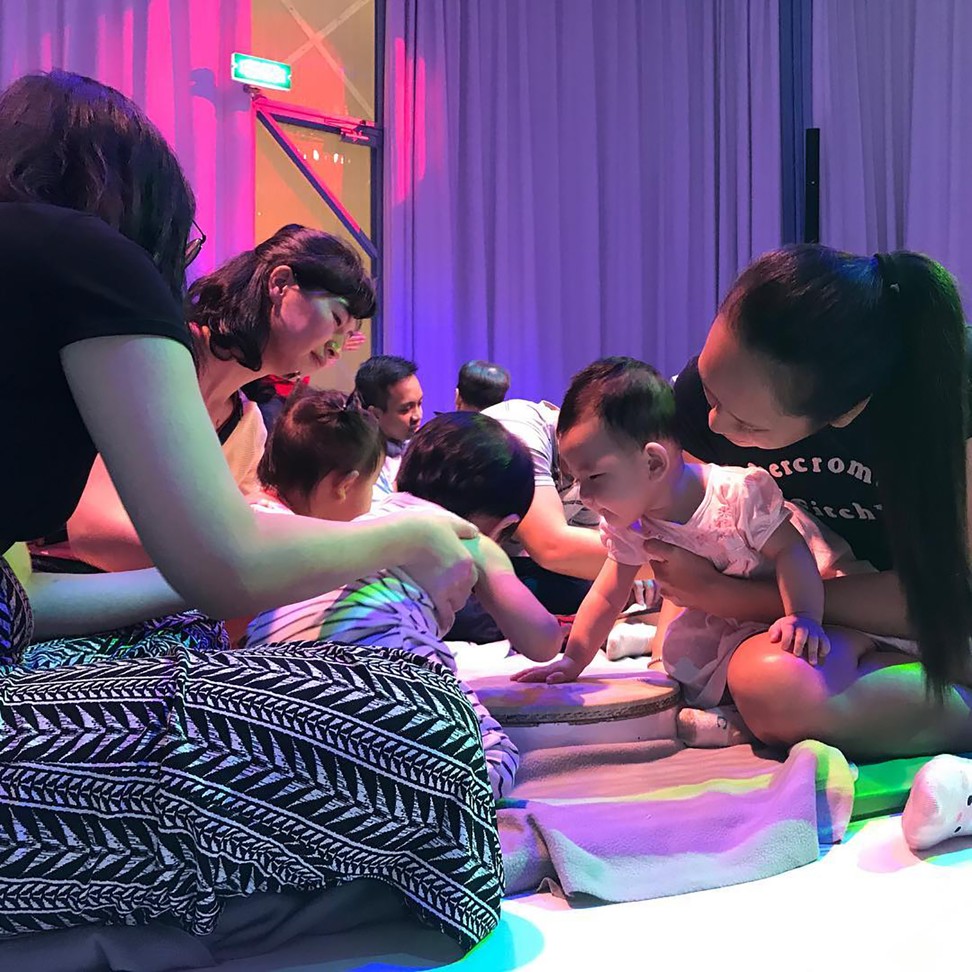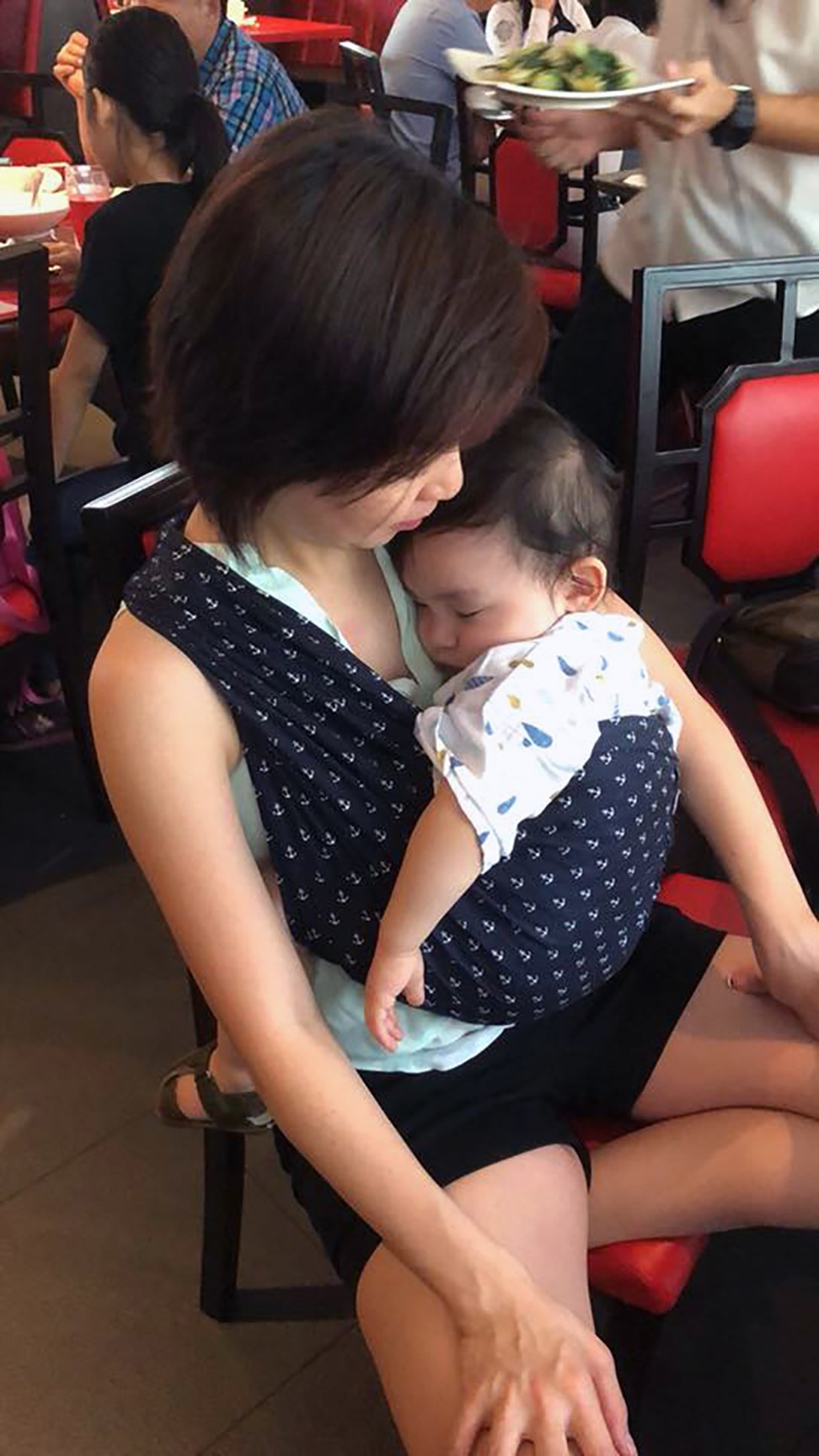
As Singapore’s fertility rate falls, its baby businesses boom
- Singapore’s birth rate is in the doldrums – so why are baby products proving such fertile ground for businesses?
The acronym BYOB has taken on a different meaning these days in Singapore – Bring Your Own Baby, whether to the office or even the theatre.
Trehaus, now in its third year, is the first co-working space in the city state with childcare and learning facilities. Set up by working mums for working parents, it has two areas separated by glass partitions and doors, allowing parents to work while keeping an eye on their children.
“Trehaus is that proverbial modern village; they say it takes a village to raise a child,” says chief operating officer Elizabeth Wu. “Our community has become the ecosystem for work-life integration to happen for working parents with young children. We have had so many people walk through our doors to find the support they need as working parents.”
At The Artground, a spin on the traditional theatre where silence and attention are expected, audiences can crawl, eat, cry and even touch performers and props. Taking their cue from similar events in the United Kingdom, BYOB comedy shows are also attracting attention, offering toys, baby-changing facilities and loads of laughter.

These innovative businesses are booming in perhaps the most unlikely place: given Singapore’s low fertility rates, the consumer base for such services is actually diminishing.
Singapore recorded just 39,615 births in 2017, the lowest in seven years. The overall fertility rate now stands at 1.16, the second-lowest figure since the 1960s, and well below the 2.1 threshold needed for the population to replace itself.
Yet, child-friendly businesses are flourishing despite the birth dearth. Apart from the usual reasons of increasing affluence, growth is being spurred by expanding social networks, e-commerce and the gig economy, and government initiatives.
This has driven a significant bump in baby-related revenue, according to online research site Statista. The toy sector, for example, earned US$153 million in 2018, and revenue is tracking towards annual growth of more than 20 per cent, which would mean a market worth US$318 million by 2022.
Globally, the figures are also on the rise. In 2018, the baby products market was valued at US$73.86 billion. Statista predicts it to swell to US$89.78 billion by 2022.
There is an array of new baby products and services. Many were established by “parent-preneurs” who set out to solve their parenting problems and inadvertently created a new business – from pram-sharing services to breastfeeding biscuits.
When Singaporean Su Ling Zagorodnova, 42, had her first child 12 years ago, she started a blog to record her daughter’s milestones and share interesting products on the internet. Readership grew quickly.
As she interacted with her readers, it became clear there was a growing market of mothers who wanted specific baby products, but could not find them easily in shops. Zagorodnova began sewing pouch slings – for mothers to carry their babies hands-free – and sold them via her blog.
Trump and Kim, Crazy Rich Asians, and Asean: Singapore’s riding high, but there pitfalls to its new-found fame
The business started as a hobby operated from home while Zagorodnova juggled her day job, but is now Singapore’s largest e-tailer for parents. She has since gone full-time into Pupsik Studio, which sells baby and parenting products, and the business has moved into an office run by a team of nine.
“Total fertility rate may be down but spending power has gone up,” Zagorodnova said. “Parents are more internet savvy and they have done their research online too. They aren’t just looking for essentials any more – they want variety and exclusivity, products that are hard to find offline.”
Nurjanna Ng, meanwhile, has a job that will be unfamiliar to many: babywearing consultant.
Ng, a 34-year-old mother of two, had watched her sister-in-law wear her baby in a wrap, and she wanted to do the same with her firstborn in 2013.

So she joined a Singapore-based babywearing Facebook group. But such wraps, fashioned from one piece of long cloth, were uncommon in Singapore at the time. Baby carriers in the local market were mainly bulkier items that resembled a backpack. That was when Ng decided to bring in wraps from an overseas brand to sell in Singapore.
She attended courses to teach people how to use the wraps. With the certifications, Ng began conducting babywearing classes at her home with small groups, and personalised sessions at clients’ homes.
She can now list 13 babywearing consultants in Singapore off the top of her head. The market for baby carriers has evolved too, with a variety now readily available. The Facebook group she joined in 2012 has ballooned from a few hundred members to more than 24,700 today.
“Social media is really powerful,” said Ng, who is now director of Soul Singapore, an India-based baby carrier brand. “It allowed mothers to network, share about the carriers they like and organise outings known as ‘sling meets’ to let other mothers try their carriers.”
The Singaporean government has actively encouraged people to have babies, offering cash grants, childcare leave and benefits. These initiatives have also fuelled the growth of the mother and baby care industry.
How the law caught up with the Philippines’ Imelda Marcos and her stolen millions
In 2012, the city state’s Health Promotion Board worked with maternity wards in five hospitals to implement the World Health Organisation’s Baby-Friendly Hospital Initiative (BFHI) guidelines, which encourage and support breastfeeding. All three public hospitals offering maternity services in Singapore are now BFHI-certified, while one private hospital aims to be certified by next year.
This has led to more mothers wanting to breastfeed, in turn driving demand for nursing-related products and services. One example is the growth in the lactation biscuit business.
Joanna Goy read about such biscuits when trying to breastfeed her second child. She decided to bake her own batch during her four-month maternity leave and share them with breastfeeding mothers she befriended on Facebook.
“I had no intention to sell them as I was just baking for myself and my friends,” said Goy, 32, who previously worked at a bank. By the time her maternity leave ended in 2015, she was receiving enquiries about her biscuits from dozens of mothers each month. This prompted Goy to quit her bank job and go into baking full-time.

Two years later, she moved to a commercial kitchen. Goy now has a retail store, Singapore Lactation Bakes, in the northeastern part of the country and a team of nine people who handle daily operations. The business receives 800 orders some months.
Elaine Chow, who chairs the Singapore-based non-profit Breastfeeding Mothers’ Support Group, said government initiatives had indeed helped to increase interest in breastfeeding among parents.
“Mothers are encouraged at the point of the child’s birth to try breastfeeding, so they are supporting these small players catering to the nursing market,” she said.
Still, Chow identified online communities as the game-changer, pointing to the way Facebook and WhatsApp groups allow mothers to organise, share resources and recommend products and services.
“I have 10 times more mum friends today than 10 years ago when I had my firstborn,” she said. “The internet helps you catch up. You join a group and immediately find friends that you’re unlikely to meet organically in real life.”
It looks like technology together with government support may have given enterprising mums and dads free time, spare cash, and inspiration to kick start their business idea. But to get the stork to deliver more babies? That will need much more convincing. For now, baby businesses – not babies – are booming. ■

